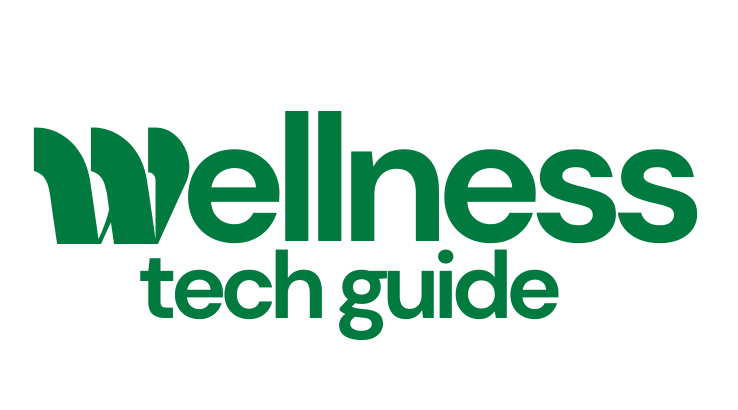Picture this: It’s Monday morning, and instead of dragging yourself to the office with a heavy heart, you’re actually excited. Your company just launched a wellness challenge where you and your colleagues are competing in daily step counts, and there’s a massage therapist coming in on Wednesdays. Sounds too good to be true? Welcome to the world of employee wellness programs – where taking care of your people isn’t just the right thing to do, it’s smart business.

What Are Employee Wellness Programs, Really?
Let’s cut through the corporate jargon for a second. Employee wellness programs are essentially your company’s way of saying, “Hey, we care about you as a whole person, not just a productivity machine.” These are structured initiatives designed to support your physical, mental, and emotional health while you’re on the job (and sometimes off it too).
Think of corporate wellness programs as an investment in human capital – except the returns come in the form of fewer sick days, higher productivity, and employees who actually want to stick around. I’ve seen companies transform their entire culture with the right wellness strategy, and trust me, the results speak for themselves.
The Building Blocks of Effective Wellness Programs
So what should an effective employee wellness program include? Here’s where things get interesting. The best workplace wellness programs aren’t one-size-fits-all solutions – they’re carefully crafted ecosystems that address multiple aspects of employee wellbeing.
Physical Health Initiatives
Your body is your temple, right? Well, most of us treat ours more like a 24/7 convenience store. That’s where physical wellness components come in:
- On-site fitness facilities or gym membership reimbursements
- Health screenings and biometric assessments
- Ergonomic workplace assessments to prevent those dreaded desk-related injuries
- Healthy eating programs including nutritious snacks and meal planning workshops

Mental Health and Stress Management
Here’s something I learned the hard way: you can have all the ping-pong tables in the world, but if your employees are burning out, those tables become expensive dust collectors. Mental health support is non-negotiable in today’s employee mental health programs:
- Stress management workshops and mindfulness training
- Employee Assistance Programs (EAPs) offering confidential counseling
- Mental health days beyond traditional sick leave
- Workplace meditation sessions or quiet spaces for decompression
Work-Life Balance Solutions
The whole “work-life balance” thing isn’t just millennial whining – it’s a legitimate business concern. Companies that nail this aspect see dramatically better retention rates:
- Flexible work arrangements including remote work options
- Time management training to help employees work smarter, not harder
- Family-friendly policies like childcare support or eldercare resources
- Paid volunteer time connecting employees with meaningful causes
The Real Benefits: Why Your Company Should Care
Now, let’s talk numbers because that’s what really gets executives excited. The benefits of employee wellness programs extend far beyond feel-good PR:
For Companies:
- Reduced healthcare costs by an average of $3.27 for every dollar invested
- Lower absenteeism rates – healthy employees show up more consistently
- Increased productivity through better focus and energy levels
- Improved employee retention saving costly recruitment and training expenses
- Enhanced company reputation attracting top talent who value wellness
For Employees:
- Better physical health through preventive care and lifestyle changes
- Reduced stress levels leading to improved mental clarity
- Stronger workplace relationships built through shared wellness activities
- Increased job satisfaction feeling valued and supported by employers
- Financial benefits through insurance premium reductions and wellness incentives
Popular Wellness Activities That Actually Work
Let me share some employee wellness program ideas that I’ve seen make real impact. The key is variety – what motivates one person might bore another to tears.
Fitness Challenges and Activities:
- Step counting competitions using wearable devices
- Lunchtime yoga or fitness classes
- Company sports leagues or walking groups
- “Deskercise” breaks to combat sedentary work
- Perhaps a beginner fitness challenge for everyone to follow
Mental Wellness Initiatives:
- Lunch-and-learn sessions on stress management
- Meditation apps with company-sponsored subscriptions
- Mental health first aid training for managers
- Regular mental health check-ins during one-on-ones
Social and Team-Building Wellness:
- Group cooking classes focused on healthy eating
- Wellness fairs with local health vendors
- Team charity runs or walks
- Wellness committees led by employee volunteers
Measuring Success: How to Know If Your Program Is Working
Here’s where many companies stumble. You can’t just launch a wellness program and hope for the best. You need employee wellness engagement strategies that include solid metrics:
Key Performance Indicators:
- Participation rates in wellness activities
- Health risk assessments showing improvement over time
- Employee satisfaction surveys specifically about wellness offerings
- Absenteeism and turnover rates compared to pre-program baselines
- Healthcare cost trends and insurance claim data
- Productivity metrics and performance reviews
The most successful programs I’ve observed track these metrics quarterly and adjust their offerings based on what the data reveals.
The Money Talk: What Does This Actually Cost?
Let’s address the elephant in the room – the typical cost to implement an employee wellness program. The investment varies widely depending on company size and program scope:
Budget Breakdown:
- Small companies (under 100 employees): $150-$500 per employee annually
- Medium companies (100-500 employees): $300-$800 per employee annually
- Large companies (500+ employees): $500-$1,500 per employee annually
But here’s the thing – these aren’t just costs, they’re investments with measurable ROI. Most companies see returns within 2-3 years through reduced healthcare expenses and improved productivity.
Top Wellness Platform Recommendations for 2025
Based on extensive research and user feedback, here are the leading corporate wellness software platforms making waves this year:
| Platform | Best For | Key Features | Starting Price |
|---|---|---|---|
| Wellable | Comprehensive programs | Wearable integration, custom challenges, rewards system | Custom pricing |
| Personify Health | Personalized wellness | Individual goal setting, gamification, educational resources | Contact for pricing |
| Woliba | Culture integration | Social feeds, team challenges, daily wellness tips | $2-4 per employee/month |
| Nectar | Recognition + wellness | Point-based rewards, peer recognition, team collaboration | $2.75 per employee/month |

Getting Started: Your Wellness Program Roadmap
Ready to jump in? Here’s how to start an employee wellness program that actually sticks:
Phase 1: Assessment (Months 1-2)
- Survey employees about their wellness interests and needs
- Analyze current healthcare costs and absenteeism patterns
- Review existing benefits and identify gaps
- Set realistic goals and budget parameters
Phase 2: Planning (Months 2-3)
- Form a wellness committee with diverse employee representation
- Research and select appropriate wellness platforms or vendors
- Develop communication strategies to build excitement
- Create measurement frameworks for tracking success
Phase 3: Launch (Month 4)
- Start with 2-3 high-impact, low-cost initiatives
- Communicate extensively about available resources
- Provide training for managers on supporting employee wellness
- Begin baseline data collection
Phase 4: Evolution (Ongoing)
- Gather regular feedback and adjust programming
- Introduce new activities based on employee interests
- Scale successful initiatives and discontinue ineffective ones
- Celebrate successes and share impact stories
The Legal Stuff: Tax Benefits and Compliance
Here’s some good news for the finance folks – there are legitimate tax benefits and legal considerations that make workplace wellness programs even more attractive:
- Tax deductions for wellness program expenses as ordinary business expenses
- ACA compliance benefits for programs meeting specific criteria
- Workers’ compensation potential reductions through injury prevention
- HIPAA considerations requiring careful handling of health information
Always consult with legal and tax professionals to ensure your program meets all applicable regulations while maximizing available benefits.
The Future of Workplace Wellness
The landscape of employee wellbeing programs continues evolving, especially post-pandemic. Here’s what I’m seeing on the horizon:
- Virtual and hybrid wellness options accommodating remote work
- Mental health parity with physical health initiatives
- Personalization through AI creating individualized wellness journeys
- Integration with existing benefits creating seamless employee experiences
- Focus on preventive care rather than reactive health measures
Making It Happen: Your Next Steps
Look, implementing employee wellness programs isn’t just about jumping on a trend – it’s about recognizing that your people are your greatest asset. In a world where talent is increasingly hard to find and even harder to keep, showing genuine care for employee wellbeing isn’t optional anymore.
The companies thriving in 2025 are those that understand this fundamental truth: when you invest in your employees’ health and happiness, they invest their energy and loyalty back into your business. It’s not rocket science, but it does require commitment, creativity, and genuine caring.
Ready to transform your workplace culture? Start small, think big, and remember that every wellness journey begins with a single step. Your employees – and your bottom line – will thank you for it.
Ready to launch your employee wellness program? Contact wellness platform providers today for personalized consultations, and join the growing number of companies prioritizing employee wellbeing. Your healthiest, happiest, and most productive workforce is waiting.
This article reflects current best practices in corporate wellness programming. Always consult with healthcare professionals and legal advisors when implementing wellness initiatives in your organization.





